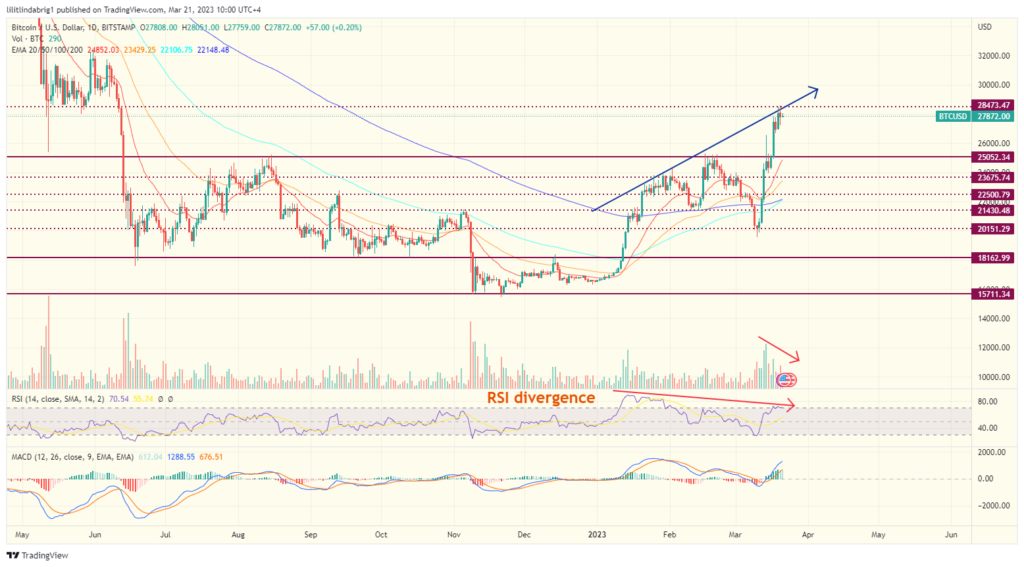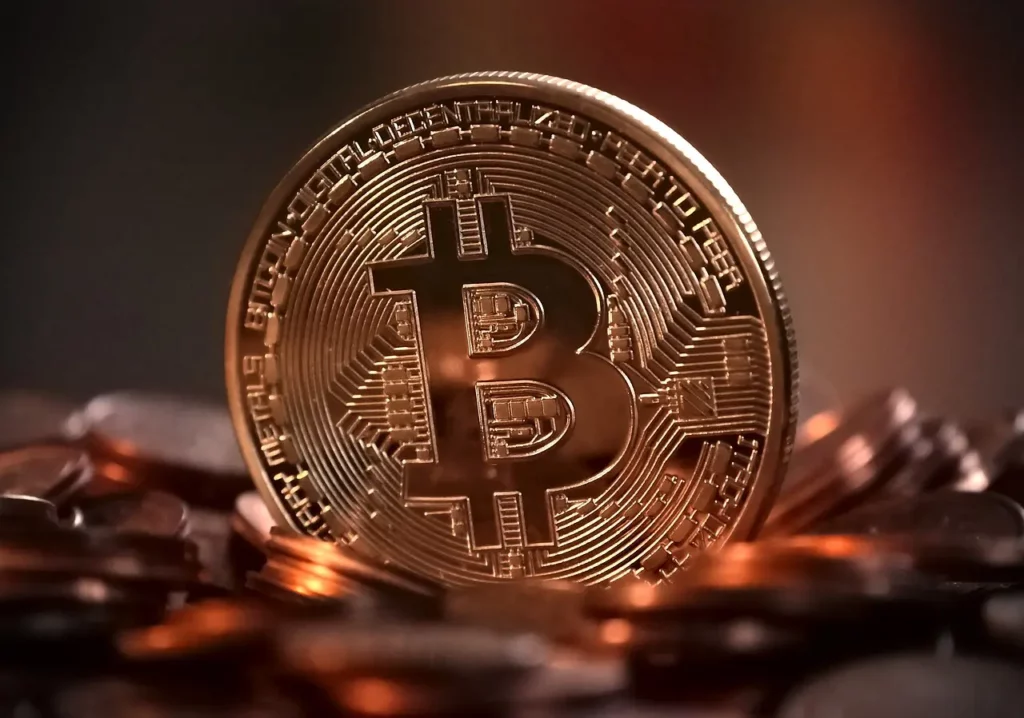Key Takeaways:
- Bitcoin value advanced 70% year-to-date despite the looming recession.
- The price appreciation does not make it a safe-haven asset.
- BTC/USD uptrend was dependent on the Fed-provided liquidity and is hardly an alternative to the banking system at the moment.
YEREVAN (CoinChapter.com) – Bitcoin (BTC) price has bounced 70% year-to-date after starting 2023 below the $17,000 resistance. As a result, BTC/USD exchange rate broke the $25,000 ceiling for the first time since the Terra implosion and stood just below $27,900 on March 21.

True, Bitcoin spiked alongside gold, bagging impressive gains quarter-to-date. However, gains alone are not enough to consider an asset a safe haven.
No asset can be a permanent safe-haven
Generally, any asset that provides a hedge from volatility elsewhere could be considered a sanctuary asset. For example, after the Federal Reserve implemented a sequence of interest rate hikes in 2022 to curb runaway inflation, investors abandoned the risk-on stock market, betting on the dollar to provide safety.
On the other hand, precious metals, such as gold, have historically served as a hedge against the dollar and the fiat economy. But they have also failed at times to shield their investors and moved in toe with the crisis rather than flourishing. For example, during the Great Crisis of 2008, Gold spot price lost over 30% before picking up in 2009.
Thus, “safe haven” is an erratic status that heavily depends on the market conditions and the general geopolitical situation.
Bitcoin is still perceived as an alternative to fiat.
When Bitcoin first emerged a decade ago (after the Great Crisis of 2008), the allusive Satoshi aimed to present the financial world with an alternative to the fiat system, eliminating the need for a potentially corrupt middleman. Thus, Bitcoin was pronounced ‘digital gold,’ an asset that could serve as a sanctuary when the mainstream financial system was in too much turbulence.
However, the narrative changed in 2021, when the alpha crypto saw a substantial inflow from institutional investors. As a result, Bitcoin correlated with risk-on assets and became vulnerable to market downturns, including the post-pandemic stock market crash.
Despite Bitcoin’s own volatility, avid crypto investors still perceive the flagship crypto as an opposition to the fiat banking system. For example, crypto analyst @Ashcryptoreal, with a following of over half a million people, recently tweeted in defense of that narrative.

He also noted that the Federal Reserve is not likely to raise interest rates in the upcoming March 22 meeting, which speaks to Bitcoin’s advantage. But let’s put a pin in that for now.
Bitcoin is hardly a sanctuary in the current banking turmoil.
Sylvia Jablonski, the CEO and CIO at Defiance ETFs, agreed with the outlook. The executive noted that the collapse of three medium-sized US lenders and the crisis of confidence in Europe after the forced sale of Credit Suisse to UBS may have pushed investors to “run back into crypto, with the hopes of a no-contagion policy to play out there.”
She also noted that “there might be some sense of confidence in keeping funds outside of the banking system.” Bitcoin gained traction against the growing contagion in the banking system and, as mentioned, rallied to over $27,000.
Bitcoin investors rely on the Fed to go dovish.
Furthermore, the BTC’s bullish narrative relies on the expectations of the Fed pushing the breaks on the interest rate hikes. Returning to the statement we pinned above, Bitcoin became sensitive to interest rate hikes as it correlated with equities. As the economy slows down, investors tend to abandon risk-on assets, and Bitcoin suffers alongside stocks.
However, the Fed is aware of the looming recession and might proceed with the hawkish policies as previously intended. In that case, the bitcoin rally is likely to crumble, sending the investors to seek a hedge elsewhere.
Additionally, it is also important to note that the Fed has already injected liquidity into the market in its attempts to throw a lifeline to the banking system. Thus, the BTC price uptrend might have been a consequence of the raised liquidity.
Matt Maley, the chief market strategist at Miller Tabak + Co., agreed with the skeptical perspective. He noted that Bitcoin is an asset that “has moved with liquidity flows in the past.”
With this crisis, the Fed injected liquidity last week, so I think the move has more to do with added liquidity than investors seeing Bitcoin as a flight to safety asset. It’s getting overbought, so Bitcoin will have a tough time breaking above $30k as this crisis calms down.
he noted in a recent Bloomberg Newsletter.
Click here to keep up with the ever-changing crypto market and never miss the scoop!
The post Bitcoin is No Safe Haven in Ongoing Banking Turmoil appeared first on CoinChapter.







